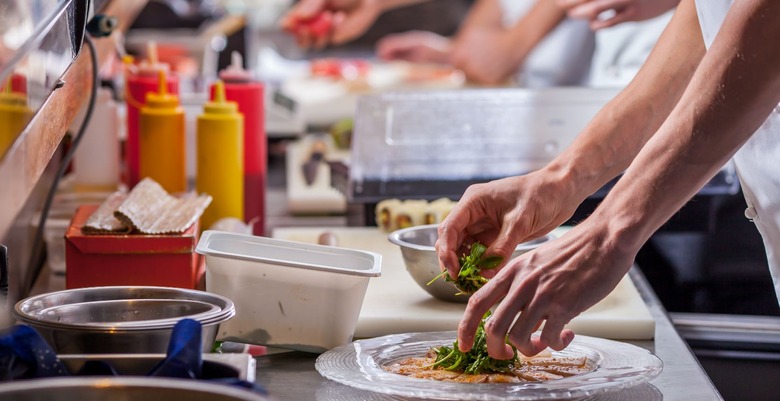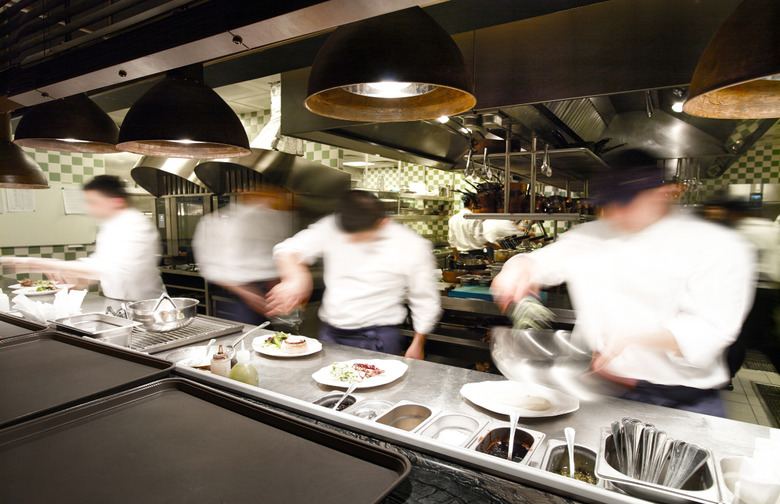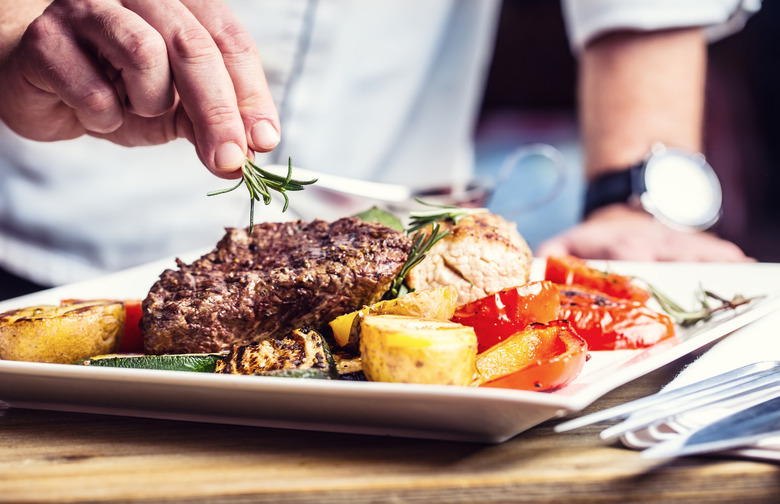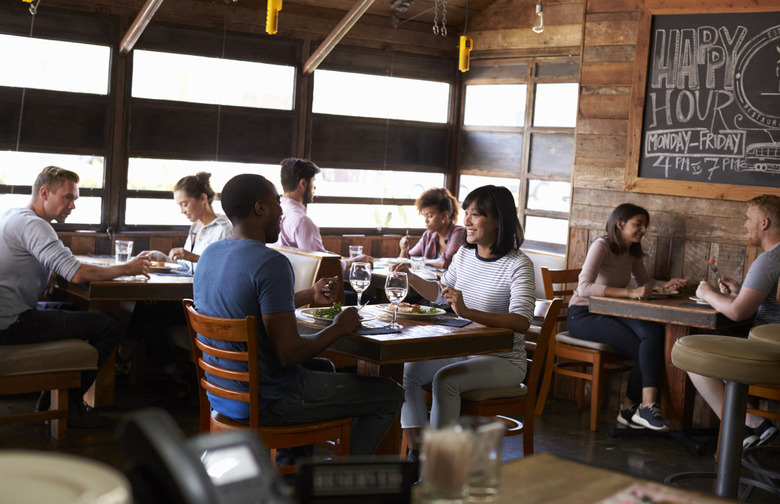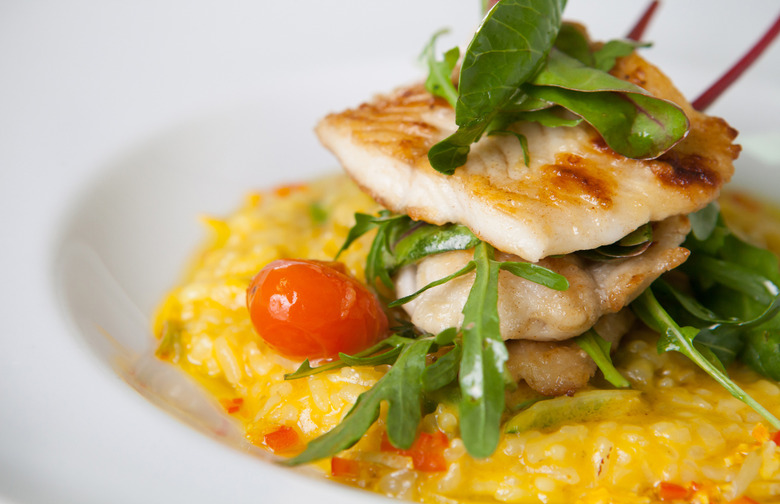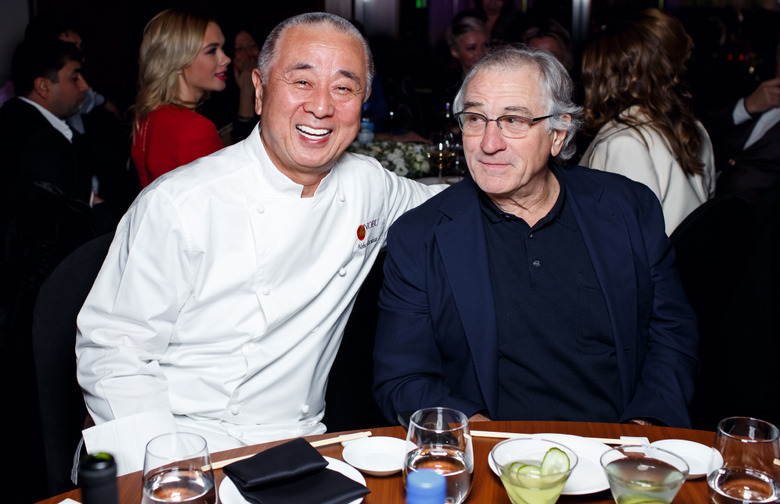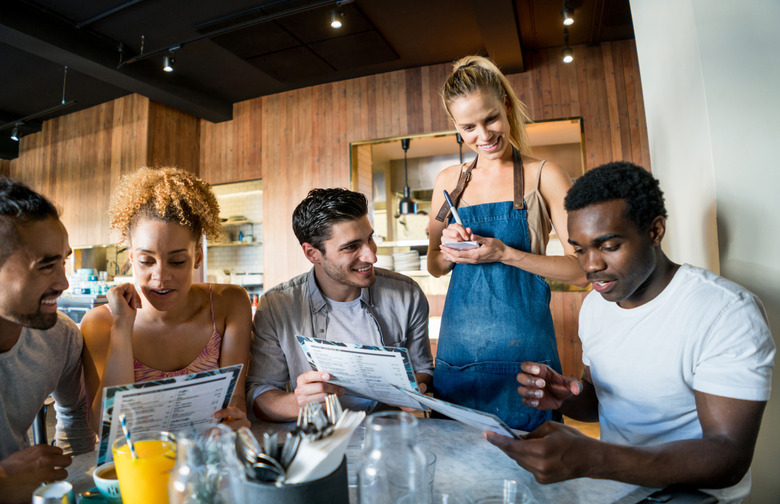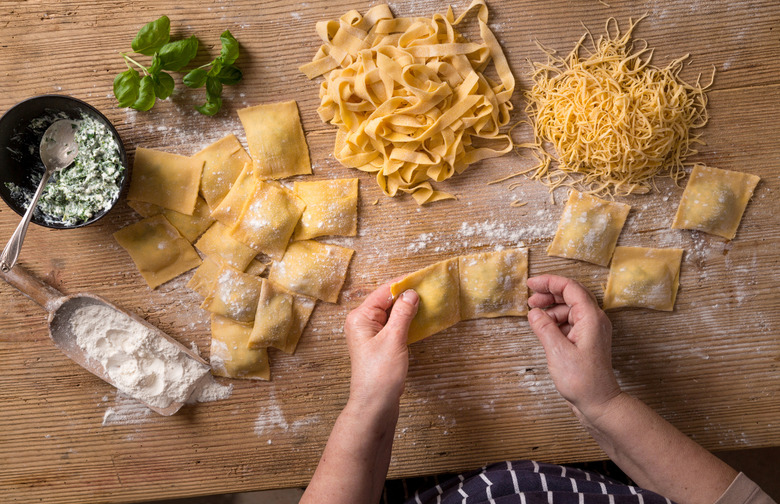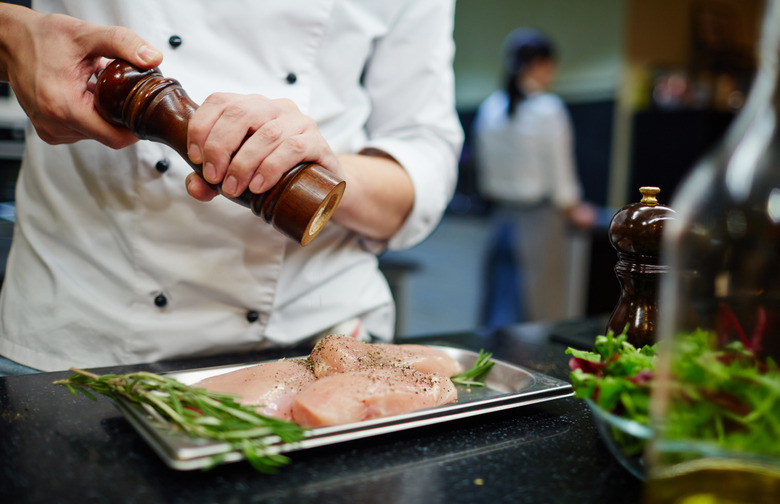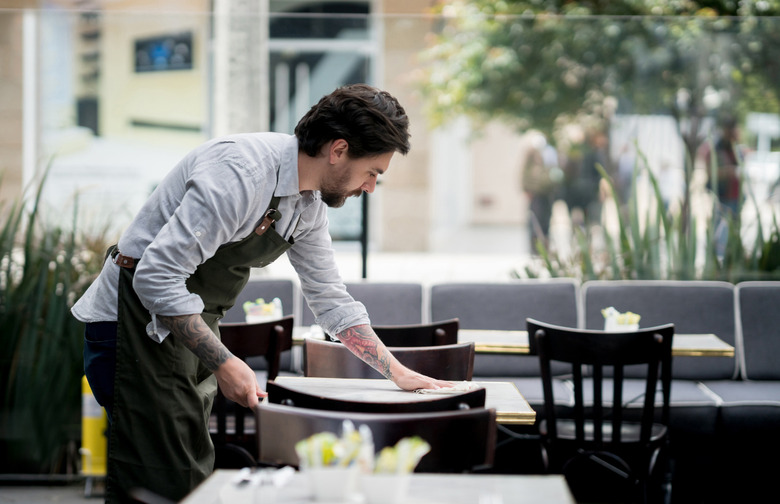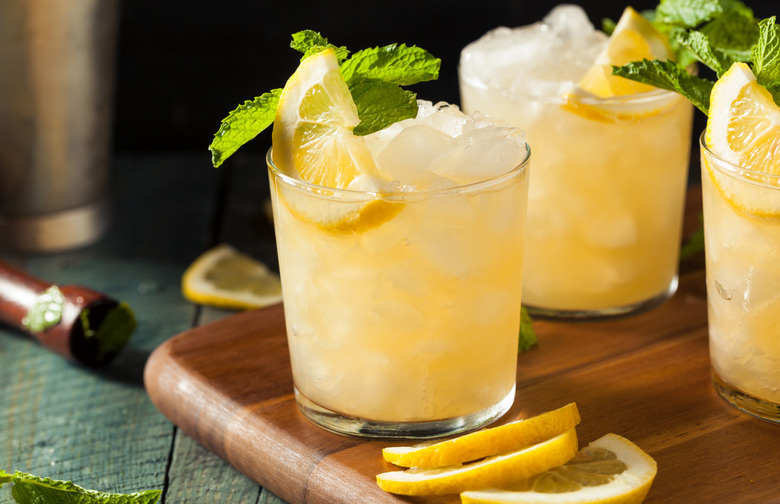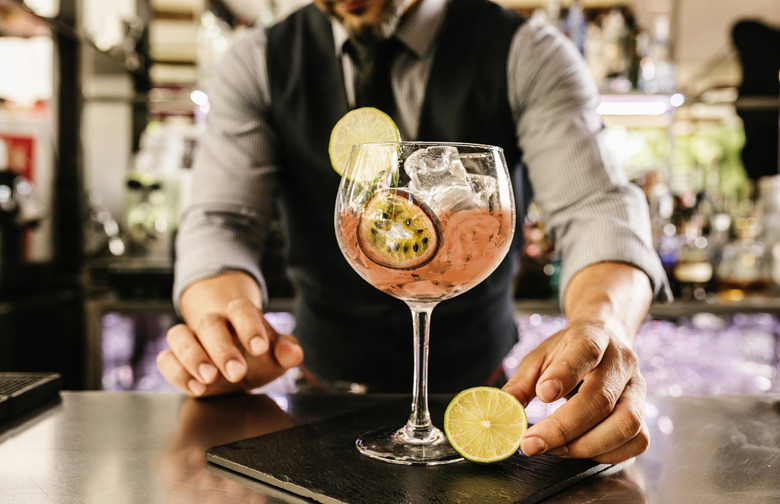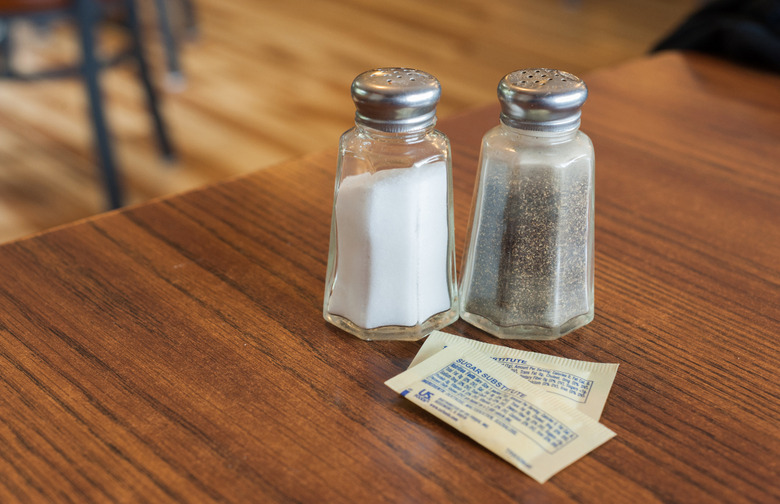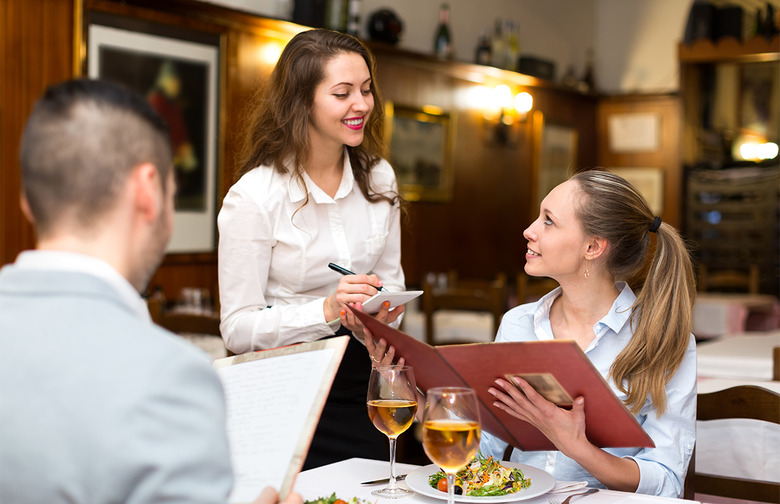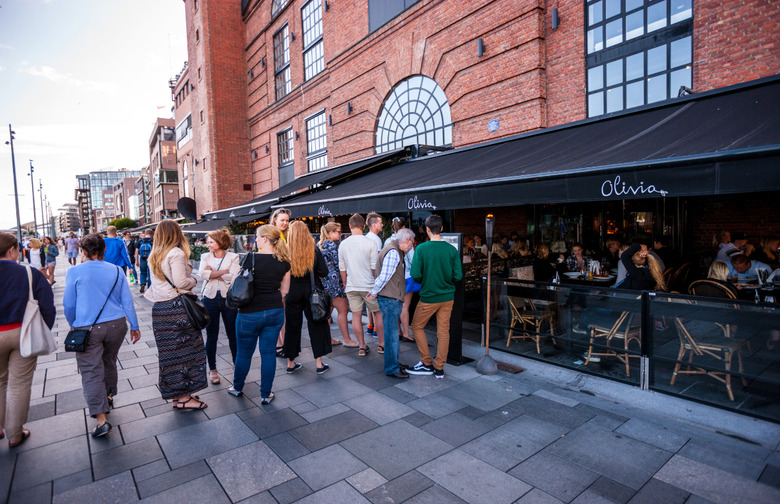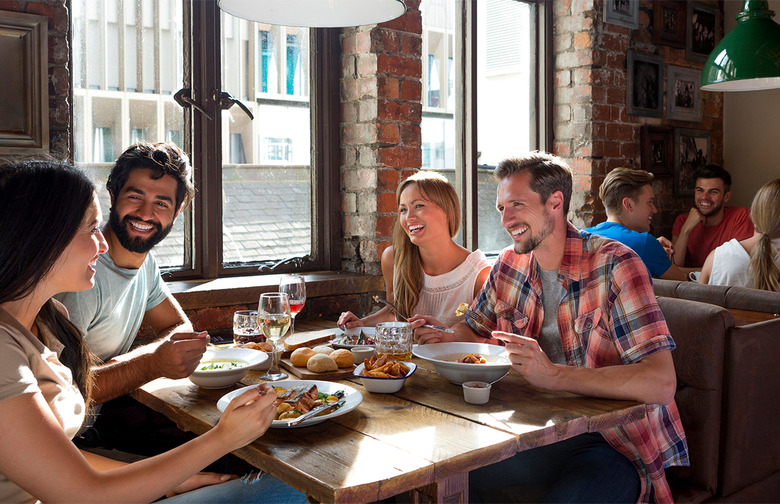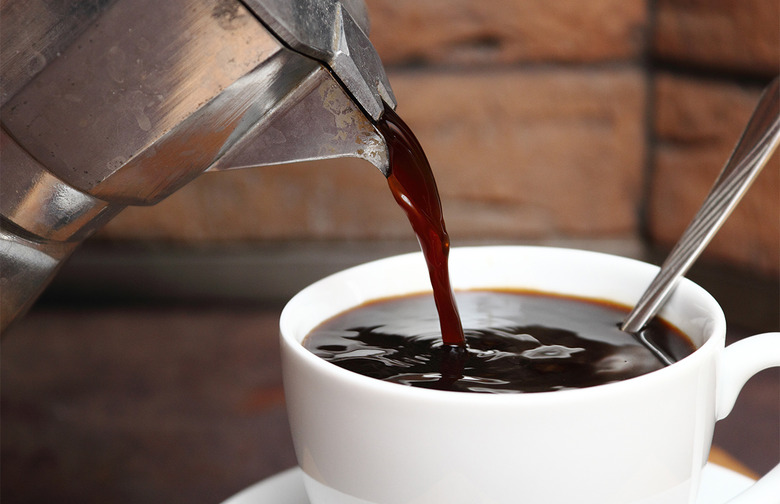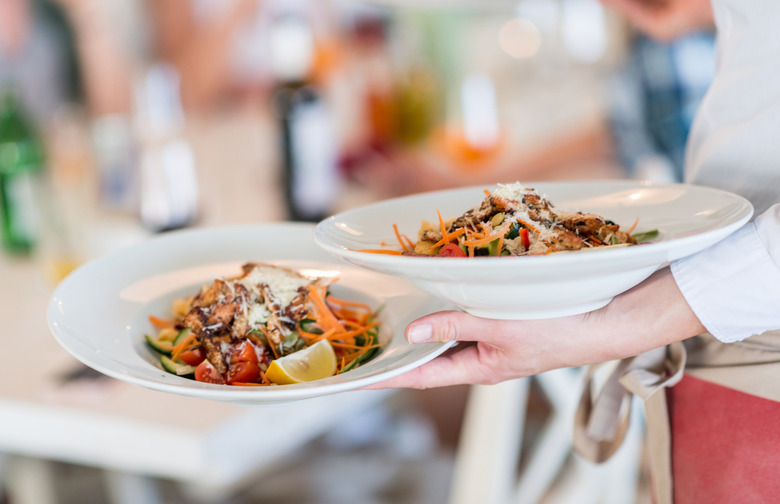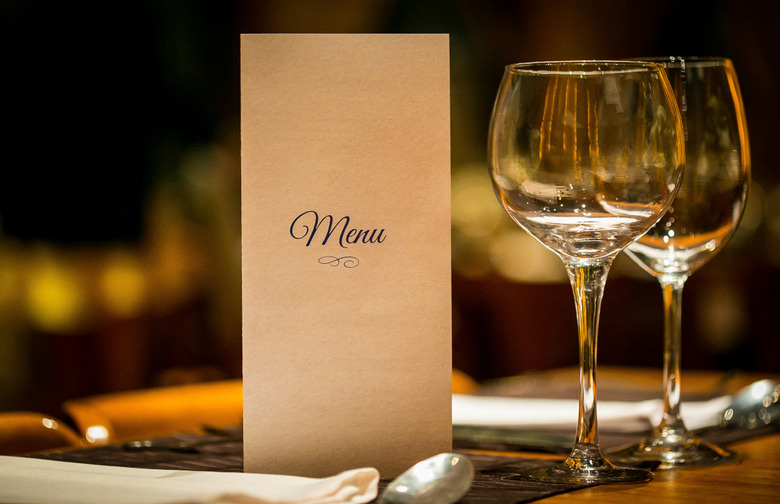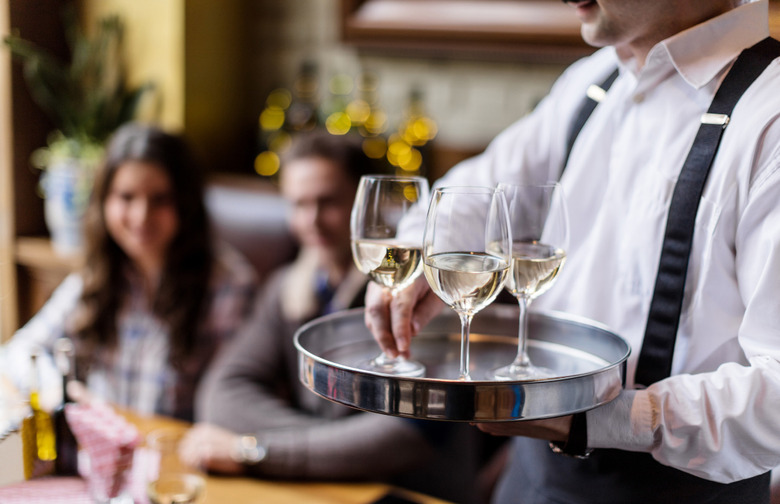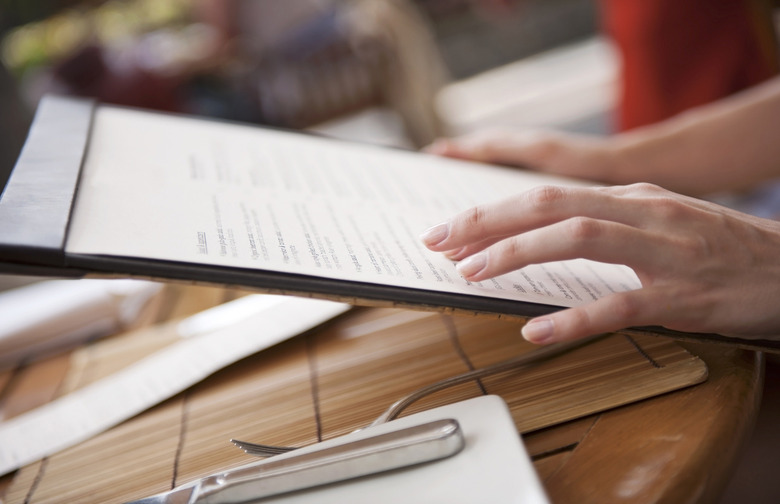21 Secrets Restaurants Don't Want You To Know Gallery
When you walk into a nice restaurant, it often appears to be a well-oiled machine, with servers, runners, and bussers gliding seamlessly from table to table, to the kitchen, and to the bar, working with clockwork precision to make sure every diner is happy. But servers and other staff aren't robots, and there are a few things that you probably don't know about what goes on behind the scenes at even the best restaurants.
It’s All Controlled Chaos
In even the highest-end restaurant kitchens, it's controlled chaos behind those swinging doors. Expediters are shouting at cooks to make sure the orders are coming along, servers are shouting for their orders, and everyone is just trying to keep up. And if you've ever seen a kitchen that gets so far behind that they're thoroughly "in the weeds," you'd be surprised that anything comes out of there at all.
Specials Are Sometimes Ways to Use Food Before It Goes Bad
In some upscale restaurants, specials are a way to showcase fresh and seasonal ingredients that just came in that morning, but at many restaurants, they're ways to make sure that ingredients that are almost past their prime don't go to waste. Fish soup is the worst offender.
They Can Hear You
Having a squabble with your date, or maybe out for a special meal with someone who isn't your significant other? You'd be surprised how much servers can hear, and you can be sure that they're chatting about you behind the scenes.
Don’t Order Fish on Sundays
Anthony Bourdain's now-legendary assertion that you shouldn't order fish on Mondays is thankfully a thing of the past, but the "don't order fish on Sundays" rule is still very much in effect. The fact of the matter is, fresh fish isn't coming in on Sundays, so whatever you order isn't going to be as fresh as it could be. "You know for sure that there's no fresh fish on Sunday except if it's bought fresh from Chinatown, but even they don't get it really fresh on Sundays," chef Eddie Huang told The Awl.
VIPs Get Special Treatment
If you're a regular customer at a very expensive restaurant, you can rest assured that the staff will be well aware of that, so don't be surprised if you get a free glass of wine or dessert (and if you're planning on becoming a regular, it doesn't hurt to become friendly with the manager or owner). As for the first-timers, well, not everyone gets special treatment, as Pete Wells' review of Daniel can attest.
Servers Hate It When You Ask Them What’s Good
Just because someone waits tables at a restaurant doesn't mean that they've tasted every item on the menu. And even if they have, just because they enjoy a dish doesn't mean you will, too (and servers generally aren't allowed to tell customers that something on the menu isn't good). Instead of asking them what's good, ask them what some of the most popular dishes are, or just read the menu and make an informed choice based on your own preferences.
It’s Not Always Made From Scratch
This one should be obvious (especially if you've ever seen Kitchen Nightmares), but even at expensive restaurants dishes aren't always scratch-made. Vegetables are bought frozen and microwaved, stews and soups are bought frozen and vacuum-sealed and reheated in hot water, and other pre-cooked dishes are reheated in the microwave as well. If it doesn't taste fresh, it isn't.
Ingredients Are Repurposed
Repurposing ingredients isn't necessarily a bad thing; it's a great way to prevent waste and it also saves a restaurant money. But it also has the potential to be pretty gross: You probably wouldn't add those shredded carrots to your salad from the salad bar if you knew that they'd been sitting out for three days straight and spending their nights in the fridge. But being cooked into a soup after day one? Fine by us.
Tables and Menus Are Dirtier Than You Realize
There are plenty of dirty places at restaurants, some of which aren't as obvious as you might think. Many tables are quickly wiped down in-between customers with an old rag, which only serves to move bacteria around, and menus are touched by everyone and rarely cleaned. If you drop a piece of food on the table, consider it contaminated, and wash your hands (or use Purell) after holding the menu.
Avoid the Lemons and Cocktail Garnishes
The lemons that garnish your Diet Coke and limes that get muddled into your mojito most likely weren't washed first, and they've been sitting all day (or sometimes longer) in the open tray on the bar before the bartender touches them with his bare hands (same goes for other garnishes like cherries and pineapple wedges). If you squeeze the lemon into your soda, don't toss it into your drink afterwards.
The Ice Might Be Filthy
An investigation into fast-food restaurants in the U.S. found that 70 percent of the ice in the ice machine contained more bacteria than the water in the toilet.
Salt Shakers and Ketchup Bottles Get Pretty Gross
The items that remain on the tables throughout all of service can get quite a germy buildup over the course of the day. Ever notice that they're sometimes sticky? Yeah, you don't want to be touching these very much.
They Know When You’re Lying
If you're planning on ordering something but don't like one of the components, just ask them to leave it off. If you tell your server that you don't want olives in your salad because you're allergic to them, then the knives, cutting boards, and everything else in the kitchen that's come in contact with olives and has to come in contact with your food has to be sanitized. And worst of all, the servers and kitchen crew know that you're just making it up.
Wait Times Are Just Very Rough Estimates
The greeter at the host station isn't some kind of sage; they can't just magically look at their computer screen and automatically know exactly how long your wait will be. The best they can do is see how many people are on line ahead of you and take an educated guess.
Music Is a Psychological Device
According to research by the University of Leicester, a diner becomes more willing to spend money in a restaurant if they're hearing classical music, because it makes them feel richer. Conversely, diners listening to rock or pop spend 10 percent less. And if the music is blasting, it's a conscious effort by the management to get you out of the restaurant as quickly as possible.
Your “Regular” Coffee Might be Decaf
If you order regular coffee and the restaurant only has decaf on hand, they may not brew a new pot for you on the spot; they'll just give you decaf.
Servers Might Be Incentivized to Sell Certain Dishes
If management is trying to sell a lot of one or two specific menu items (a pricey filet mignon that's about to go bad, for example), they could incentivize servers to push that dish more than others; whoever sells the most servings wins a prize. So be on the lookout for a server who's especially jazzed about one seemingly random specific dish — and take his or her suggestion with a grain of salt.
They Use ‘Power Positioning’ in Designing Menus
The fact that restaurants design their menus with a goal of ripping off their customers is no secret: The National Restaurant Association even provides some sneaky tips on how best to do it right on their website:
"Menu design draws some inspiration from newspaper layout, which puts the most important articles at the top right of the front page. Some restaurants will place their most profitable items or specials in that spot. Elsewhere in the menu, items you want to sell the most should be shown in first and last position. These are typically your biggest sellers, so put careful thought into which items provide your greatest return. Another 'power position' is the inside right page above the center."
They Mark Up the Second-Least-Expensive Wine Bottle
Restaurants rake in the dough from wine sales, and have some sneaky ways to get you to spend more money on wine than you planned. Many diners are too embarrassed to order the least expensive bottle on the list, so they'll opt for the second-least expensive. Restaurants know this, so they tend to place the biggest markup on that very bottle (meaning that its wholesale price very well might be less than the least-expensive bottle). Just order the cheapest bottle; nobody's going to judge you for it.
They Use the Anchoring Effect
According to Dr. Chuck Schaeffer, many restaurants use a cognitive trick called price anchoring to coax you into spending more money. Compared to a $55 steak dish, a $30 pasta dish looks downright inexpensive, for example. Also, a happy hour advertising $2 off all cocktails doesn't actually save you much money if the starting price for a cocktail is 18 bucks!
They’re Masters in Upselling
Ah, the art of the upsell. It's a subtle way to get you to spend more money under the guise of being helpful. And the power of suggestion is a forceful one: By merely directing you to take another look at the appetizers and side dishes, the server improves the chances that one might catch your eye and you'll be okay with dropping an additional 10 bucks. Many people also subconsciously aim to please, so it's easier to just say yes to a side dish instead of turning the offer down. It sounds strange, but pay attention the next time a server tries to upsell you; you'll find that you subconsciously want to say yes to everything.
For 20 secrets of your local Chinese takeout joint, click here.
